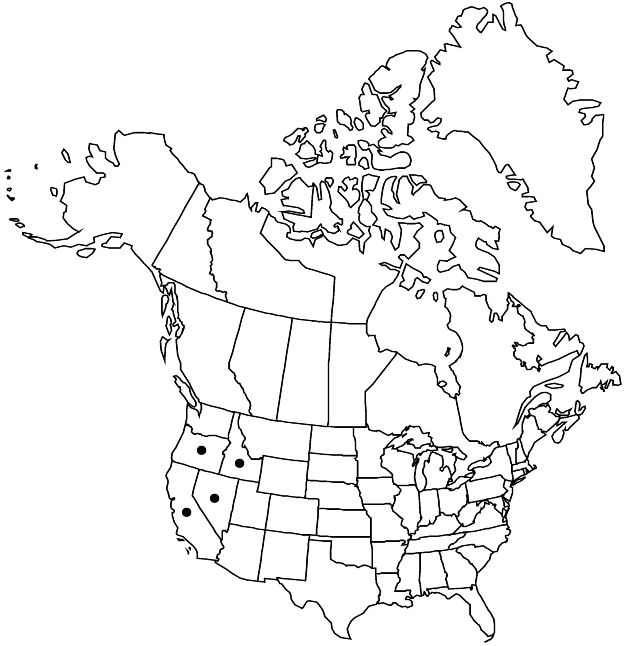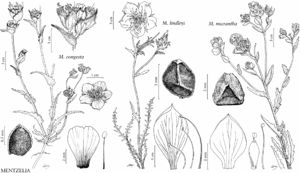Difference between revisions of "Mentzelia congesta"
Fl. N. Amer. 1: 534. 1840.
FNA>Volume Importer |
imported>Volume Importer |
||
| Line 62: | Line 62: | ||
|publication year=1840 | |publication year=1840 | ||
|special status=Illustrated;Endemic | |special status=Illustrated;Endemic | ||
| − | |source xml=https:// | + | |source xml=https://bibilujan@bitbucket.org/aafc-mbb/fna-data-curation.git/src/bb6b7e3a7de7d3b7888a1ad48c7fd8f5c722d8d6/coarse_grained_fna_xml/V12/V12_284.xml |
|genus=Mentzelia | |genus=Mentzelia | ||
|section=Mentzelia sect. Trachyphytum | |section=Mentzelia sect. Trachyphytum | ||
Revision as of 20:08, 27 May 2020
Plants wandlike or candelabra-form, 7–40(–50) cm. Basal leaves persisting; petiole present or absent; blade linear-lanceolate to linear, margins usually deeply to shallowly lobed, rarely entire. Cauline leaves: petiole present or absent (proximal leaves), absent (distal leaves); blade linear-lanceolate to linear (proximal leaves), ovate-lanceolate (distal leaves), to 9 cm, margins deeply to shallowly lobed or entire. Bracts mostly white with green margins, conspicuous and showy, outer broadly ovate, inner obovate, outer 7–14.7 × 4.2–10.4 mm, inner 4.1–5.8 × 2.7–3.5 mm, width 1/2–7/8 length, concealing capsule, margins usually deeply 3–9-lobed to toothed, rarely entire. Flowers: sepals 1–4 mm; petals orange proximally, pale yellow to yellow distally, 2–8(–10) mm, apex retuse; stamens 20–40, 1.5–5 mm, filaments monomorphic, filiform, unlobed; styles 1.5–5 mm. Capsules cylindric or clavate, 5–12 × 2–3 mm, axillary curved to 10° at maturity, usually inconspicuously longitudinally ribbed. Seeds 10–25, in 2+ rows distal to mid fruit, tan, dark-mottled or not, irregularly polygonal, surface tessellate under 10× magnification; recurved flap over hilum absent; seed coat cell outer periclinal wall domed, domes on seed edges less than 1/2 as tall as wide at maturity. 2n = 18.
Phenology: Flowering May–Jul.
Habitat: Disturbed slopes, sagebrush scrub, pinyon/juniper woodlands, pine forests.
Elevation: 1200–2700 m.
Distribution

Calif., Idaho, Nev., Oreg.
Discussion
Mentzelia congesta is easily distinguished from other species in sect. Trachyphytum by its large, mostly white bracts. However, the bracts of M. congesta are strikingly similar to those of M. involucrata in sect. Bicuspidaria (see discussion under 53. M. involucrata). Phylogenetic studies suggest that the genome of M. congesta is present in more than half of the polyploid taxa in sect. Trachyphytum, including all species that exhibit bracts with partially white bases (J. M. Brokaw and L. Hufford 2010b).
Selected References
None.
